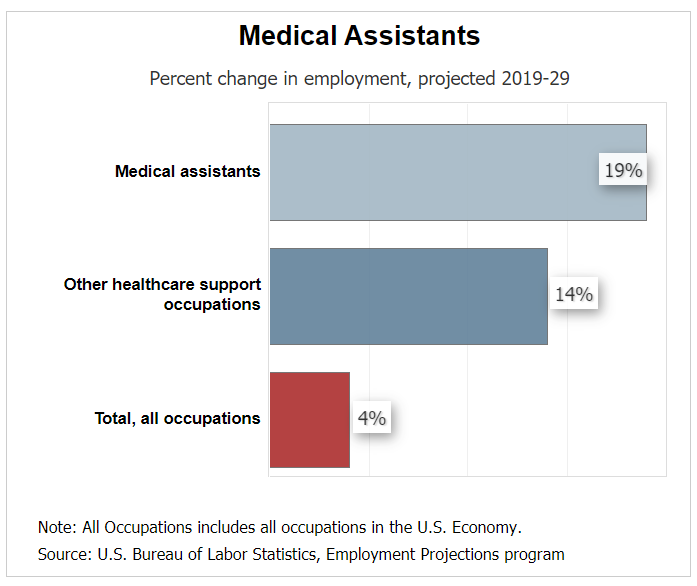What Does a Medical Assistant Do?
Students who want to take up a career in the healthcare industry and either can’t or don’t choose to engage in a long study duration (or deal with nursing school stress) should consider a medical assistant diploma. After all, medical assistants are among the fastest-growing careers in the healthcare industry, according to the Bureau of Labor Statistics. From 2019 to 2029, job opportunities for medical assistants are estimated to grow by 19%—the fastest for all occupations.

This data shows that being a medical assistant can be a great career. However, before diving into how to get a medical assistant diploma, we’ll explain the responsibilities of the job.
Responsibilities of Medical Assistants
The primary role of medical assistants, as their name implies, is to help doctors, nurses, and other medical personnel by taking care of straightforward tasks. While the roles may vary depending on the type of healthcare facility they work for, here are some of the roles and responsibilities:
1. Provide initial patient care
When patients come into the clinic, medical assistants are usually the people who greet them and assess what type of medical care they may need. For those undergoing a procedure, the medical assistant will be responsible for preparing the patient, ensuring that all medical records are complete and that the patient has undergone all pre-surgical clearance and workups.
Medical assistants are also responsible for ensuring the patients are comfortable during the checkup and procedure. In some states, medical assistants are permitted to administer medications under the supervision of medical doctors.
Medical assistants can perform simple procedures, such as preparing a patient for an x-ray or CT scan and changing dressings without close supervision. In some cases, they may be asked to assist the doctor or nurse during an examination.
2. Update medical records
Medical assistants are also tasked with updating patient records. Since they will take medical histories and get the vital signs of the patient, they are also the ones recording that information in the patient database.
Any amendments done to a patient’s medical data will require the knowledge and approval of the medical doctor, particularly if the change is substantial. However, for minor updates like the patient’s blood pressure, blood sugar level, and chief complaint, a doctor’s approval will not be necessary.
Roughly 86% of office-based physicians in the US are now implementing electronic health records (EHRs). Therefore, medical assistants are also expected to learn the EHR software that the facility uses.
A medical assistant must be committed to preserving patient confidentiality. Access to medical records does not give medical assistants the right to discuss a patient’s health history with any medical staff not directly involved in the patient’s care.
3. Schedule and manage patient check-ups
Administrative medical assistants may also answer phone calls and schedule patient appointments. This requires organizational skills since they will be coordinating the schedule of all the medical personnel needed for those appointments as well. Scheduling procedures also means ensuring that the healthcare facility has available rooms to carry out surgeries and other procedural examinations. Depending on their facility, medical assistants may also facilitate admissions, laboratory services, or discharges.
4. Fill out insurance paperwork
Since medical assistants have direct access to a patient’s medical records, they may also be asked to fill out their insurance paperwork. When preparing the documents, medical assistants may need to provide duplicate patient records, including the history of check-ups, procedures done, and relevant findings.
Medical assistants may also be tasked to prepare the patient’s billing and other records to process the insurance claim.
5. Prepare blood samples for a medical workup
In some healthcare facilities, medical assistants are allowed to draw blood from patients and send the samples to the laboratory for assessment. They are also required to follow up on the results and report them to the medical doctor. Some medical assistants are trained to approach the patient for blood extraction, which covers ways they can calm patients down before the procedure.
The roles and responsibilities of medical assistants can widely vary. The education and training they receive from their school play a critical role. With commitment, a caring attitude, and responsibility, you can have a successful career as a medical assistant.
How to get a medical assistant diploma
Now that you understand what medical assistants do, you may be inspired to learn about how to become one: get a medical assistant diploma to jumpstart your career in the healthcare industry. The program can be completed in as little as 10 months, and some schools offer in-person training as well as partly online. Check out our program offerings here.
If you found this article useful, please share it with others who may be interested in becoming a medical assistant.














